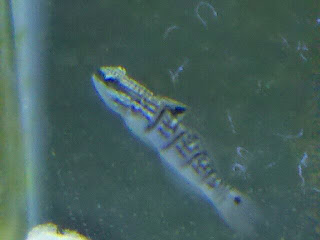 |
| Example of a bad aquascape |
Aquascaping your first marine aquarium may seem like a daunting experience. Do I glue all the rock together? How do I create caves and overhangs that I see in other reef aquariums? Here is basic guide with a few tricks to help making this exciting task of setting up a marine aquarium easier.
Materials: You need about as many pounds of live-rock as you do gallons your aquarium can hold. You can always add more so start out small if you have a tight budget. Live-rock can be the biggest investment you make in starting up your marine aquarium. It can be anywhere from 5 to 12 dollars per pound depending on the quality of the live-rock. If you are starting with a 55 gallon aquarium, that could be anywhere from 300 to 500 dollars! A trick on how to save money is to buy "base rock" or "dry rock". This rock has none of the living organisms on it that live rock does but if you buy half of the cheaper rock and half of the live-rock, the organisms from the live rock will spread to the dry rock once put in your aquarium.Try to find many different sizes including some large flat-ish rocks to put on the bottom of your aquarium for the base.
How To Aquascape:
1. DO NOT PUT YOUR SAND IN JUST YET! If you are just starting up the aquarium, wait to put the sand in until after you have the base of your live-rock aquascape laid down. If you bought live-sand from your LFS, it should be fine for a couple of hours in a bag with water while you get everything else ready. If you already put the sand in, its not too big of a deal.
2. Lay down your biggest pieces of rock first. Have a look at the different layouts at the end of the article and see where the best place is to put your pieces. Make sure the flattest part is laying face down on the aquarium bottom. You can add a little pre-made saltwater while doing this in order to keep the live rock wet but it is not necessary.
3. Stack the medium rock on top, allowing for a lot of openings, caves, and holes. The looser your live rock is placed, the more area there will be for water to move through it and therefore get biologically filtered. Also, placing your live-rock loosely will help fill out the space of the aquarium, making it look more full. To make sure the live-rock will not topple, move the rock around in a few different positions on top of the bottom one, until it locks in place. If you can't find a "sweet spot" then use a different piece of live rock or flip it over and try again.
 |
| Channel aquascape. Two islands of live rock with water flow | between them. |
|
|
|
|
|
4. The top piecies should consist of small pieces or branching live rock. Branching rock can be called fiji live rock or might be in the regular live-rock bin at your LFS. Try to fit the branching rock into cracks between your bottom live-rock but it may prove difficult to keep it in place without falling to one side or the other. Try not to have it resting against the sides of the aquarium because this will cause problems with cleaning the glass. If you can't find a good place for branching rock, try putting it in after you put the sand in, and then stick it in the sand and lean it up against the rest of the live-rock. Don't glue the rock together with epoxy unless you have to. This makes transferring the tank very difficult in that you can't pick out rock seperately. Also, it leaves the importunity for change in your aquascape.
 |
| Lagoon aquascape with suggestions for pump placement. |
5. Put your sand in! Try not to get the sand on the live-rock as this may harm organisms and cause cloudy water when you put water in. Take scoops of sand and place it around your live-rock, shoving it close to the base of the rock. When this is done, you can start adding water. Pour the saltwater directly on top of the live-rock, to help keep the sand undisturbed. This will also test the aquascape's stability. If you see any rocks fall or wobble during this process, try to fix the problem.
Other things to think about:
1. Water flow- you want your pumps to be able to push water through and around the aquascape so plan accordingly. This is the main way that marine aquariums are filtered biologically instead of freshwater aquariums that use carbon filters.
2. Coral placement - make sure you have places to put corals if you plan on keeping a reef tank.
3. Cleaning - make sure there is room between the glass and rock for your hand or for a magnetic algae scraper.
4. Look for inspiration on youtube or just searching on the internet for different pictures of setup saltwater aquariums.
 |
| An idea for an aquascape. Large base rocks on bottom,branching rock | placed in cracks or leaning against other rock. |
| | | | |
|










